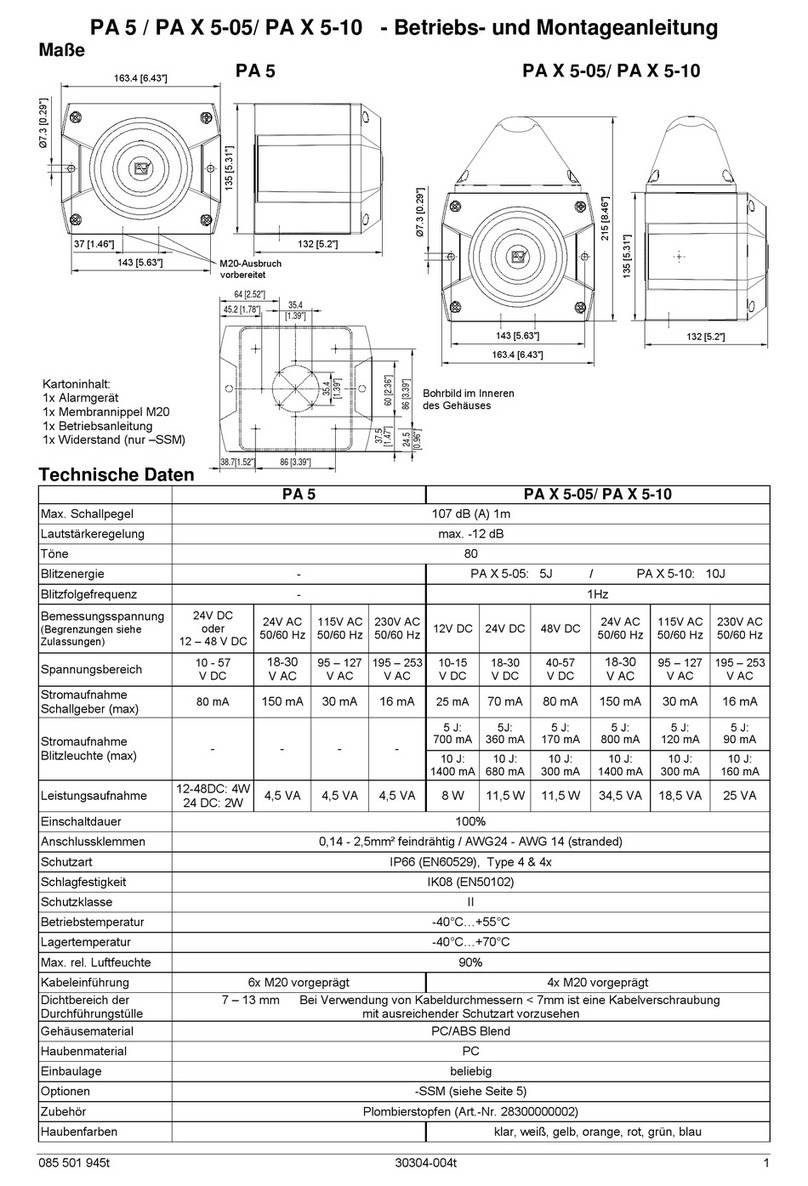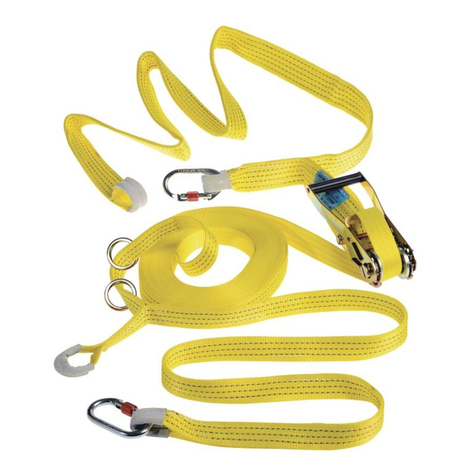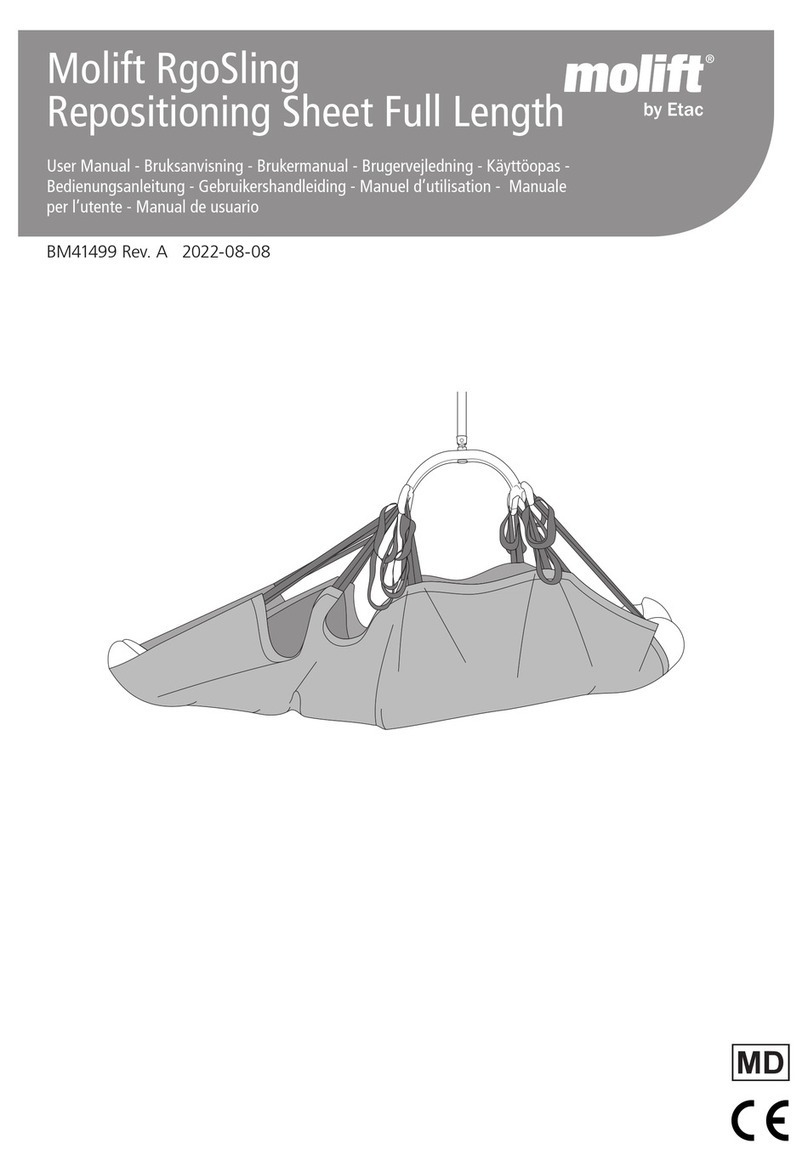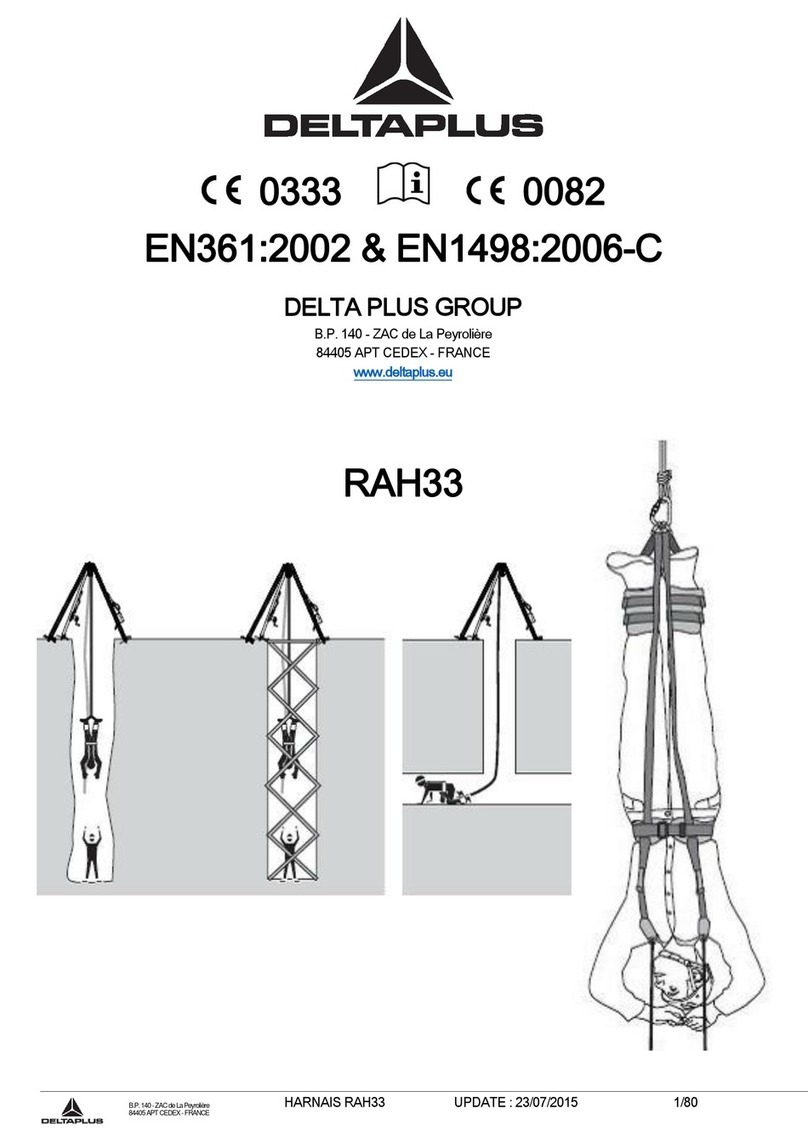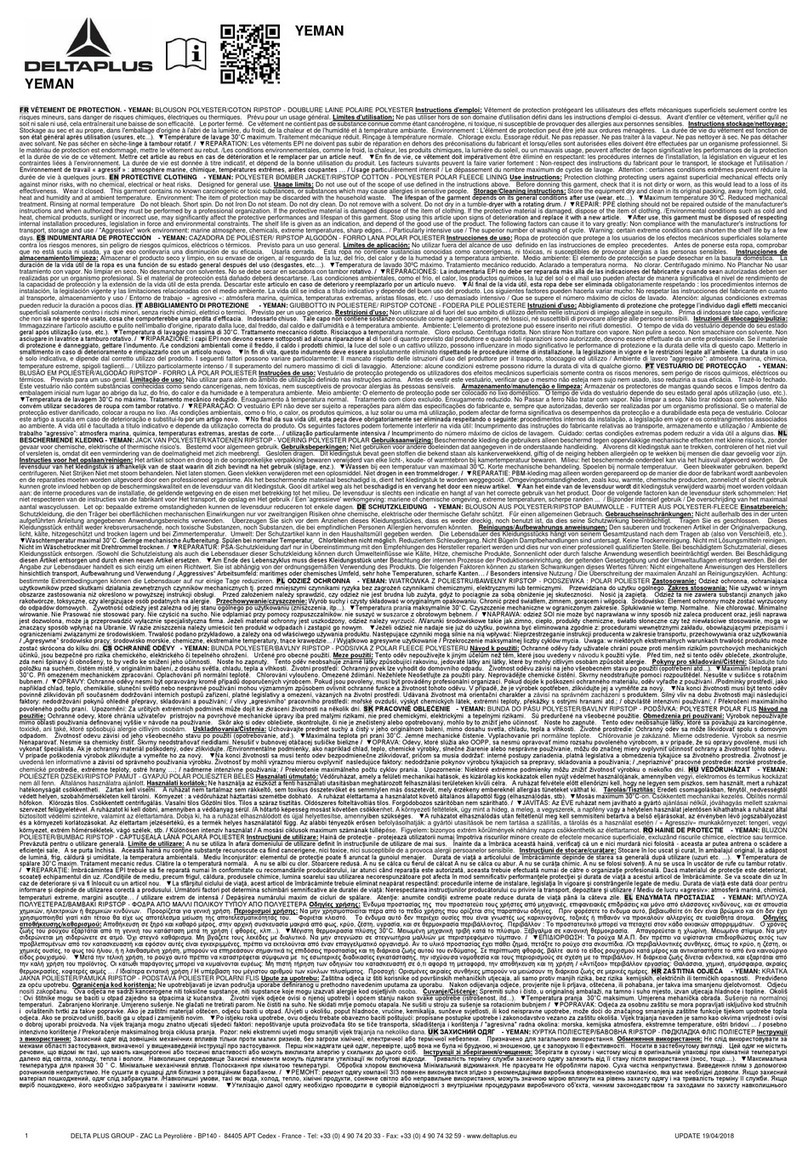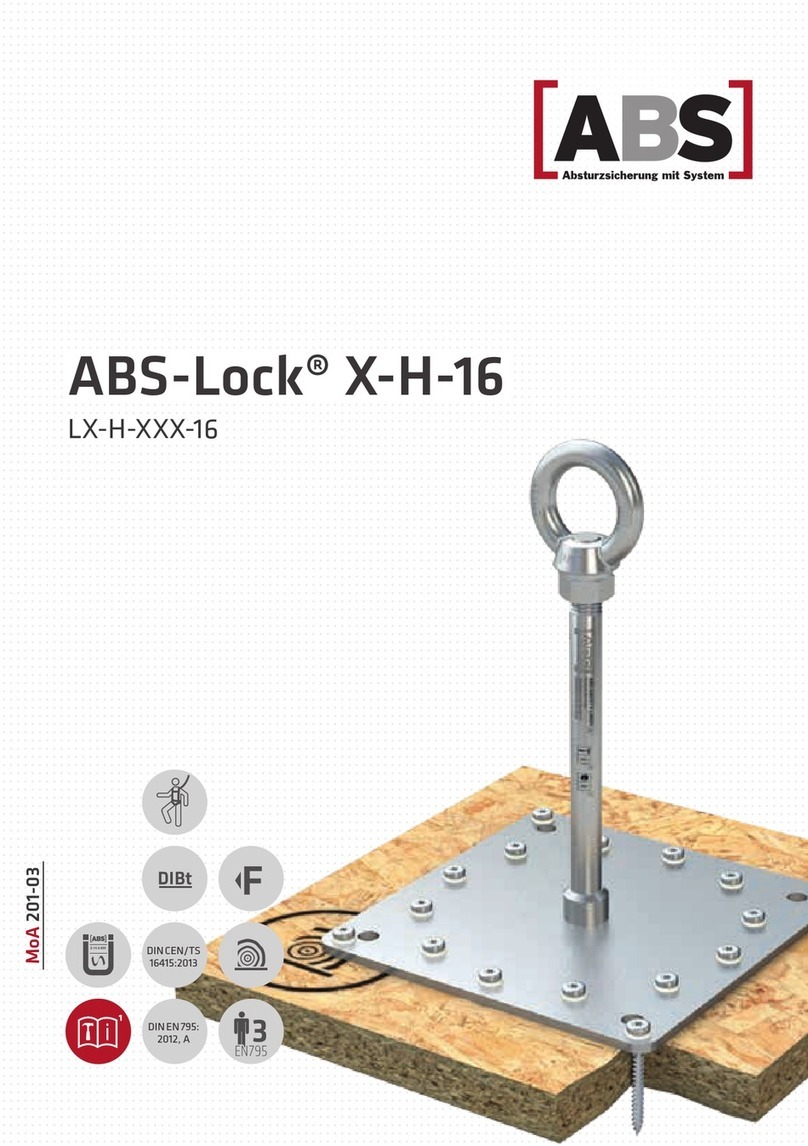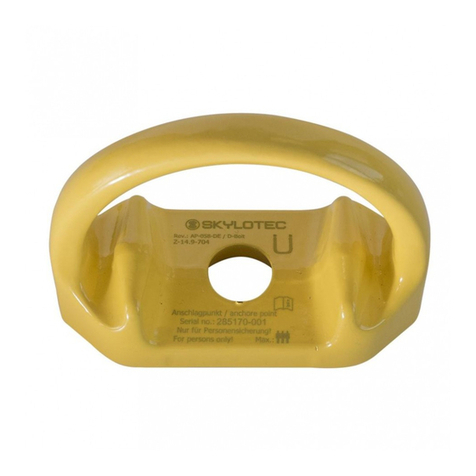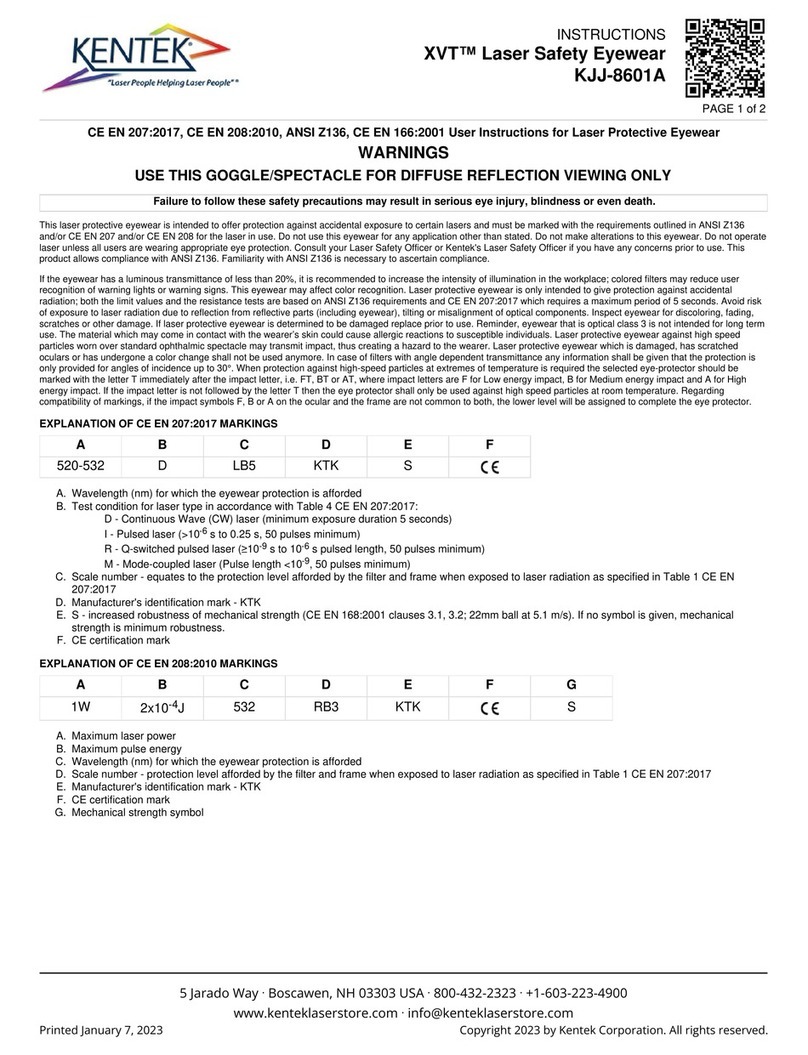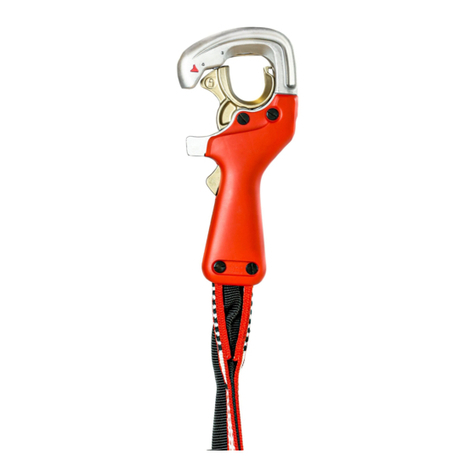Pfannenberg PA 1 Assembly instructions

PA 1 / PA X 1-05 – Betriebs- und Montageanleitung
Maße
PA 1 PA X 1-05
Technische Daten
PA 1
PA X 1-05
Max. Schallpegel
105 dB (A) 1m
Lautstärkeregelung
max. -12dB
Töne
80
Blitzenergie
-
5J
Blitzfolgefrequenz - 1Hz
Bemessungsspan-
nung
(Begrenzungen
siehe Zulassungen)
24V DC
oder
12 – 48V DC
24V AC
50/60 Hz
115V AC
50/60 Hz
230V AC
50/60 Hz 12V DC 24V DC 48V DC 24V AC
50/60 Hz
115V AC
50/60 Hz
230V AC
50/60 Hz
Spannungsbereich
10 - 57
V DC
18-30
V AC
95 – 127
V AC
195 – 253
V AC
10-15
V DC
18-30
V DC
40-57
V DC
18-30
V AC
95 – 127
V AC
195 – 253
V AC
Stromaufnahme
Schallgeber (max)
80 mA 150 mA 30 mA 16 mA 25 mA 70 mA 80 mA 150 mA 30 mA 16 mA
Stromaufnahme
Blitzleuchte (max)
- - - - 700 mA 360 mA 170 mA 800 mA 120 mA 90 mA
Leistungsaufnah-
me
12-48DC: 4W
24 DC: 2W
4,5 VA 4,5 VA 4,5 VA 8 W 11,5 W 11,5 W 34,5 VA 18,5 VA 25 VA
Einschaltdauer
100%
Anschlussklemmen
0,14 - 2,5mm² feindrähtig / AWG24 - AWG 14 (stranded)
Schutzart IP66 (EN60529), Type 4 & 4x
Schlagfestigkeit IK08 (EN50102)
Schutzklasse II
Betriebstemperatur
-40°C…+55°C
Lagertemperatur -40°C…+70°C
Max.
rel. Luftfeuchte
90%
Kabeleinführung 4x M20 vorgeprägt 5x M20 vorgeprägt
Dichtbereich der
Durchführungstülle
7 – 13 mm Bei Verwendung von Kabeldurchmessern < 7 mm ist eine Kabelverschraubung
mit ausreichender Schutzart vorzusehen
Gehäusematerial PC/ABS Blend
Haubenmaterial
PC
Einbaulage beliebig
Optionen -SSM, (siehe Seite 5)
Zubehör Plombierstopfen (Art-Nr. 28300000002)
Haubenfarben klar, weiß, gelb, orange, rot, grün, blau
Kartoninhalt:
1x Alarmgerät
1x Membrannippel M20
1x Betriebsanleitung
1x Widerstand (nur –SSM)
Bohrbild im Inneren
des Gehäuses
Bohrbild im Inneren
des Gehäuses
22 [0.87"]
86.4 [3.4"]
172.4 [6.79"]
M20-Ausbruch vorbereitet
37
[1.46"]
109.5 [4.31"]
98 [3.86"] 80.6 [3.17"]
Ø6.3 [0.25"]
44.1 [1.74"] 35.4
[1.39"]
25.3
[1"]
13
[0.51"]
86 [3.39"]
109.5 [4.31"]
Ø6.3 [0.25"]
80.6 [3.17"]
35.4
[1.39"]
60 [2.36"]
50 [1.97"]
26.8 [1.06"]
60 [2.36"]
35.4 [1.39"]
44.1 [1.74"]
26.8
[1.06"] 35.4
[1.39"]
13 [0.51"]
25.3 [1"]
82.8 [3.26"]
30.1 [1.19"]
085 501 944u 30303-004u 1

Zulassungen
Zulassungen
(gilt für gekennzeichnete Betriebsmittel)
Bauproduktverordnung
(305/2011/EU)
12
PA 1: VdS 0786-CPD-21182 PA X 1-05: 0786-CPD-21220
PA 1
PA X 1-05
Optionen
–SSM (24V DC)
Bemessungsspannung
24 – 48V DC
24V DC
48V DC
Spannungsbereich gemäß
EN54-3, EN54-23
18V – 57V
Option: -SSM (18V – 30V)
18 - 30V 40 - 57V
Haubenfarbe Blitzleuchte - rot, klar
Ton
2
15
60
104
131
146
konform zur Bauproduktenrichtlinie (89/106/EWG)
1200Hz-500Hz (Sägezahn/ Saw tooth) DIN/PFEER P.T.A.P.
500Hz-1200Hz (Ansteigender Ton/ Slow whoop)
825Hz (Dauerton/ Continuous)
660Hz (Unterbrochener Ton/ Intermittent)
800Hz/ 1000Hz (Wechselton/ Alternating)
544Hz/ 440Hz (NF S 32-001)
Signalisierungsbereich
EN54-3:
siehe Dokument 30303-005-1
EN 54-23 Kategorie O:
siehe Dokument 30303-005-1
Umweltschutzklasse Typ B
Einbaulage beliebig Leuchte zeigt nach unten
Die Prüfung erfolgte unter Verwendung des mitgelieferten Membrannippels und der äußeren Befesti-
gungsbohrungen.
VdS PA1: G 212115, PA X 1-05: G 212188 Daten siehe Bauproduktverordnung (305/2011/EU)
GL
61062-13 HH Umweltkategorie C, H, EMC1
MED
MEDB00002BH
CNBOP PA 1: 2015/2014 PA X 1-05: 2017/2014
UL, cUL UCST, UCST7, ULSZ, ULSZ7, UEES, UEES7 (weiterführende Informationen siehe Seite 7)
Inbetriebnahme
Sicherheitshinweise:
- Der elektrische Anschluss darf nur von hierfür autorisierten Personen in Übereinstimmung mit den derzeit gültigen
Vorschriften durchgeführt werden.
- Warnung vor gefährlicher hoher elektrischer Spannung.
- Vor dem Öffnen ist sicherzustellen, dass das Gerät nicht unter Spannung steht.
- Vor Inbetriebnahme ist die auf dem Typenschild angegebene Versorgungsspannung zu kontrollieren. Eine falsche
Betriebsspannung kann zur Schädigung bzw. zur Zerstörung des Betriebsmittels führen.
- Bei der Installation ist darauf zu achten, dass die Anschlussleitung gegen Zug und Verdrehen abgesichert ist. Bitte
beachten: Die Geräte sind nicht für einen ortsveränderlichen Einsatz bestimmt.
- WARNUNG: Bei Installation Verdrahtung entfernt von scharfen Kanten, Ecken und internen Komponenten.
- Die Öffnung des Schalltrichters darf insbesondere bei Verwendung im Außenbereich oder in staubreicher Umgebung
nicht nach oben zeigen.
- Die Funktion des Gerätes ist nur gewährleistet, wenn Ober- und Unterteil korrekt zusammengefügt sind.
Bei Verwendung der Kombination mit der Leuchte PA X 1-05:
- Um eine Beeinträchtigung des Sehvermögens zu verhindern, ist der dauernde, direkte Blick in die aktivierte Leuchte
zu vermeiden.
Öffnen des Gehäuses: Verschließen des Gehäuses
Das Gerät wird in nicht verschlossenem Zustand ausgeliefert.
Plombierstopfen für die Gehäuseschrauben sind als Zubehör erhältlich.
Kabeldurchführungen
Zur Sicherstellung der angegebenen
Schutzart sind an den dafür vorgesehenen
Durchbrüchen Kabeldurchführungen mit
einer Schutzart von IP 66 zu montieren.
Der mitgelieferte Membrannippel kann
durch eine Kabelverschraubung oder durch
einen M12-Steckverbinder mit einem
Flanschmaß von M20 ersetzt werden.
3/8
1. 2.
3/8
1. 2.
Durch Lösen der vier
Deckelschrauben lässt
sich das Oberteil a
b-
nehmen
Membrannippel IP 66
(mitgeliefert)
Verschließen des Gehäuses
durch Drehen der Decke
l-
schrauben in die Endstellung
bis zur Verrastung.
IP 66 nur bei nach außen
gerichtetem Trichter der
Membrane.
Nach Montage des Kabels
Reste der
Membrane
entfernen.
Membrannippel IP 66
(mitgeliefert)
Kabelverschraubung
IP 66
M12- Steckverbinder IP 66
(für Kleinspannungs
-
Geräte)
085 501 944u 30303-004u 2

Anschlussplatine im Unterteil:
Elektrischer Anschluss und Tonauswahl durch externe Ansteuerung C1 und C2
Betriebsspannungsanschluss Schallgeber:
Betriebsspannungsanschluss Schallgeber-Blitzleuchten-Kombination:
Gemeinsamer Anschluss von getrennter Anschluss von
Blitzleuchte und Schallgeber Blitzleuchte und Schallgeber
(Auslieferungszustand)
Der gewünschte Ton kann mithilfe des Tonartenschalters S3 (auf der Treiberplatine im Oberteil) ausgewählt werden. Die
möglichen Töne sind in der Tonartentabelle im Anhang beschrieben.
Nach Anlegen der Versorgungsspannung wird der Ton erzeugt.
Schallgeber-Treiberplatine (im Oberteil):
DC-Version AC-Version
-L
Betriebsspannungs-
+N
X2
anschluss
+N
-L
C2
C1
C2 C1
X3
X4
X2
Schallgeber und Blitzleuchte
anschluss
Betriebsspannungs-
+N
-L
+N
-L +N -L
C2
C1
C2 C1
Stecker von der Blitzleuchtenplatine
X2
anschluss für Blitzleuchte:
Betriebsspannungs-
DC:
AC:
+
X3
X4
L
N
+N
-L
+N
-L
-L
+N
C2
C1
C2 C1
Stecker von der Blitzleuchtenplatine
anschluss für Schallgeber
Betriebsspannungs-
Diode nicht überbrückt
Polarität negativ
Werkseinstellung
Diode nicht überbrückt
Polarität positiv
Diode überbrückt
Polarität negativ
Diode überbrückt
Polarität positiv
S3
S1B
S1A
S3
Lautstärkeregler
Hinweis:
Um EN54
-
3 konform zu sein, muss
sich
der Lautstärkeregler in der
Maximal
-Position befinden.
Tonartenschalter
S1B
Auswahl der Polarität
der Steuerspannung
für C1 und C2
S1A
Überbrückung der
Verpolungsdiode
085 501 944u 30303-004u 3

Änderung der Töne durch externe Ansteuerung
Für Anwendungen, die zusätzlich zum Grundton weitere Töne benötigen, besteht die Möglichkeit, bis zu drei wei-
tere Tonarten mithilfe der folgenden elektrischen Ansteuerungen zu erreichen.
Grundsätzlich wird erst der gewünschte Grundton (♪, siehe Tonartentabelle im Anhang) mit dem Tonartenschalter
S3 auf der Treiberplatine eingestellt. Die korrespondierenden zusätzlichen Töne (C1, C2, C1+C2) sind der Tabelle
„Ansteuerung der Töne“ im Anhang zu entnehmen.
Tonstufenauswahl durch Steuereingang (TAS)
DC-Version:
Bei polrichtiger Anwendung erfolgt die Tonauswahl
über die Steuereingänge C1 und C2 auf der An-
schlussplatine. Die Versorgungsspannung muss dabei
immer zusammen mit den Steuereingängen angelegt
werden. Schalterstellung S1A auf der
Treiberplatine: (Diode nicht überbrückt).
Über den Umschalter S1B auf der Treiberplatine
erfolgt die Auswahl der Polarität der Steuerspannung
(„+“ oder „–“).
„+“: positive Ansteuerung
„-„: negative Ansteuerung (Werkseinstellung)
Achtung: Ist die Steuerspannung größer als die Ver-
sorgungsspannung oder die Versorgungsspannung
liegt nicht an, erfolgt die Betriebsstromversorgung über
die Steuereingänge. Eine entsprechende Belastbarkeit
muss dann gewährleistet sein.
AC-Version:
In der AC-Version erfolgt die Tonauswahl durch An-
schließen der Phase „L“ der Versorgungsspannung an
die Steuereingänge C1 bzw. C2. Die Versorgungs-
spannung muss dabei immer zusammen mit den Steu-
ereingängen angelegt werden.
Tonstufenauswahl durch Versorgung über Steuereingang (TAV) - für alle DC-Versionen
Der Schallgeber kann über die Steuereingänge C1 bzw. C2 auf der Anschlussplatine mit Betriebsspannung ver-
sorgt werden. Versorgung und Tonstufenauswahl erfolgt somit gleichzeitig.
Der Minuspol des Schallgebers muss angeschlossen sein.Durch Anschließen der positiven Spannung an den
Pluspol der Anschlussplatine wird der Grundton (♪) erzeugt; durch Anschluss an C1 bzw. C2 wird die entspre-
chende Tonstufe ausgewählt.
Durch gleichzeitiges Anschließen der positiven Spannung an C1 und C2 wird die Tonstufe „C1+C2“ gewählt.
Der Umschalter S1B auf der Treiberplatine muss auf „+“ stehen.
Tonstufenauswahl durch Verpolung (TAR) - für alle DC-Versionen (außer Option –SSM)
Bei Schalterstellung S1A auf (Diode überbrückt) auf der Treiberplatine, kann durch Verpolung der Betriebs-
spannung zum Grundton (♪) zusätzlich Ton „C1+C2“ gewählt werden.
Der Umschalter S1B muss auf „+“ geschaltet werden.
Die Steuereingänge C1 und C2 dürfen auf der Anschlussplatine nicht beschaltet werden.
X2
Ton C1
Ton C2
+N
-L
-
+
+
C2
C1
C2 C1 +Grundton
+N
-L
X2
Ton "C1+C2"
-
+
C2
C1
C2 C1
+Grundton
+N
-L
+N
-L
X2
+N
-L
-
+
C2
C1
C2 C1 Grundton
+N
-L
X2
Ton "C1+C2"
-
+
C2
C1
C2 C1
+N
-L
+N
-L
Beispiel für DC “–“ -Ansteuerung
+N
X2
Ton C1
+N
-L
-L
C2
C1
C2 C1
Ton C2
Nur DC-Version
bzw.
Werks-
einstellung
085 501 944u 30303-004u 4

Option –SSM (Soft-Start-Modul, nur 24V DC):
- Begrenzung der Einschaltstromspitze auf:
:
max. 2,1 A
: max. 2,1 A
- Durchschalten der Betriebsspannung zum Betriebsmittel erst ab >7V
- Widerstand zur Leitungsüberwachung angeschlossen
Betriebsspannungsbereich: 18V – 30V DC
Widerstand zur Leitungsüberwachung:
Wartung, Service, Instandhaltung
Das Gerät erfordert keine besondere Wartung. Die äußere Reinigung sollte mit einer schwachen Seifenlösung ohne
Verwendung von Lösungsmittel erfolgen.
Der Schallgeber darf nur in unbeschädigtem Zustand innerhalb der spezifizierten Kenndaten betrieben werden. Umbau-
ten, Änderungen, fehlerhafter und unzulässiger Einsatz sowie die Nichtbeachtung der Hinweise dieser Betriebsanleitung
schließen eine Gewährleistung aus.
Ein Austausch von Komponenten darf nur mit Originalersatzteilen erfolgen. Reparaturen sind grundsätzlich im Herstel-
lerwerk auszuführen.
Widerstände für Leitungsüberwachung (1KOhm)
am Betriebsspannungsanschluss.
Position des Widerstandes bei Parallelschaltung
von mehreren Schallgebern im
letzten Gerät.
nicht benötigte Widerstände entfernen
*
nur bei getrenntem Anschluss von Blitzleuchte und Schallgeber
085 501 944u 30303-004u 5

PA 1 / PA X 1-05 Operating and installation instruction
Dimensions
PA 1 PA X 1-05
Technical Data
PA 1
PA X 1-05
Max. sound level
105 dB (A) 1m
Volume control
max. -12dB
Tones
80
Flash energy
-
5J
Flash frequency
-
1Hz
Rated voltage
(limits see approvals)
24V DC or
12 – 48V DC
24V AC
50/60 Hz
115V AC
50/60 Hz
230V AC
50/60 Hz 12V DC 24V DC 48V DC 24V AC
50/60 Hz
115V AC
50/60 Hz
230V AC
50/60 Hz
Operating voltage
range
10 - 57
V DC
18-30
V AC
95 – 127
V AC
195 - 253
V AC
10-15
V DC
18-30
V DC
40-57
V DC
18-30
V AC
95 – 127
V AC
195 -253
V AC
Current
consumption
Sounder (max)
80 mA 150 mA 30 mA 16 mA 25 mA 70 mA 80 mA 150 mA 30 mA 16 mA
Current consumption
Beacon (max) - - - - 700 mA 360 mA 170 mA 800 mA 120 mA 90 mA
Power consumption
12-48DC: 4W
24 DC: 2W
4,5 VA 4,5 VA 4,5 VA 8 W 11,5 W 11,5 W 34,5 VA 18,5 VA 25 VA
Duty cycle
100%
Connection terminal
0,14 - 2,5mm² / AWG24 - AWG 14 (stranded)
Resistance against
impact
IK08 (EN50102)
Ingress protection IP66 (EN60529), Type 4 & 4x
Protection class
II Double insulated equipment
Operating temperature
-40°C…+55°C
Storage temperature
-40°C…+70°C
Max. rel.
Humidity
90%
Cable entry
4x M20 (prepared)
5x M20 (prepared)
Sealing range of
grommet
7 – 13 mm
With the use of cable diameters < 7 mm, a cable screw joint with sufficient ingress protection must be pro-
vided
Material of housing
PC/ABS Blend
Material of lens PC
Installation
position
arbitrary
Options
-SSM, (see page 11)
Accessory
Sealing plug (Art-no. 28300000002)
Lens colours
clear, white, yellow, amber, red, green, blue
22 [0.87"]
86.4 [3.4"]
172.4 [6.79"]
M20-Ausbruch vorbereitet
37
[1.46"]
109.5 [4.31"]
98 [3.86"] 80.6 [3.17"]
Ø6.3 [0.25"]
Content of package:
1x Alarm device
1x Diaphragm nipple M20
1x Operating instruction
1x Resistor (only
–SSM)
Prepared M20 piercing
44.1 [1.74"] 35.4
[1.39"]
25.3
[1"]
13
[0.51"]
86 [3.39"]
109.5 [4.31"]
Ø6.3 [0.25"]
80.6 [3.17"]
35.4
[1.39"]
60 [2.36"]
50 [1.97"]
26.8 [1.06"]
60 [2.36"]
35.4 [1.39"]
44.1 [1.74"]
26.8
[1.06"] 35.4
[1.39"]
13 [0.51"]
25.3 [1"]
82.8 [3.26"]
30.1 [1.19"]
Hole pattern in the
inside of housing
Hole pattern in the
inside of housing
085 501 944u 30303-004u 6

Approvals
Approvals (valid for marked equipment)
Construction Product
Regulation
(305/2011/EC )
12
PA 1: VdS 0786-CPD-21182 PA X 1-05: 0786-CPD-21220
PA 1
PA X 1-05
Options
–SSM (24V DC)
Rated voltage
24 – 48V DC
24V DC
48V DC
Operating voltage range
acc. to EN54-3, EN54-23
18V – 57V
Option: -SSM (18V – 30V)
18 - 30V 40 - 57V
Lens colours of beacon
-
red, clear
Tone
2
15
60
104
131
146
Compliant with the Construction Product Directive (89/106/EWG)
1200Hz-500Hz (Saw tooth) DIN/PFEER P.T.A.P.
500Hz-1200Hz (Slow whoop)
825Hz (Continuous)
660Hz (Intermittent tone)
800Hz/ 1000Hz (Alternating tone)
544Hz/ 440Hz (NF S 32-001)
Signaling area
EN54-3:
see document 30303-005-1
EN 54-23 Category O:
see document 30303-005-1
Environmental
protection class
Type B
Installation position
arbitrary
Light faces down
Testing takes place using the supplied diaphragm nipple and the outer fastening bores.
VdS
PA1: G 212115, PA X 1-05: G 212188 / Data see Construction Product Regulation (305/2011/EC)
GL
61062-13 HH Environmental Category C, H, EMC1
MED
MEDB00002BH
CNBOP
PA 1: 2015/2014
PA X 1-05: 2017/2014
UL, cUL
Rated
Voltage
Audible-signal Appliance
Fire Alarm Equipment
ULSZ, ULSZ7
Audible and Visual signal Appliance
General Signal Equipment
UCST, UCST7 and UEES, UEES7
PA 1
24V – 48V DC
(Fire Alarm Equipment)
12V – 48V DC
(General Signal Equipment)
x
Special application, limited operat-
ing voltage range 18 – 57V DC
x
PA 1
PA X 1-05
24V AC
115V AC
230V AC
- x
PA X 1-05
12V DC
24V DC
48V DC
- x
PATROL sounders and combined units PA 1/ PA X 1-05 comply with the limits for a Class B digital device, pursuant to
part 15 of the FCC Rules.
UL/ cUL specifications:
Suitable for indoor and outdoor use. Signaling area: see document 30303-005-1.
Cable gland entries:
Conduit installation needs to be UL/ cUL listed fittings suitable for knockout openings. The supply wiring has to be enclosed in metal
conduits for products for Fire Alarm Use.
According to CSA-C22.2 No. 205-M1983 clause 4.3.4 the connection is limited to max. three leads.
Installation:
The units shall be installed indoors or outdoors in accordance with the manufacturer’s installation instructions as well as the National
Electrical Code (NFPA 70) and the National Fire Alarm Code (NFPA 72) for the units evaluated for Public Fire Alarm applications in the
U.S. In Canada, they shall be installed in accordance with the Canadian Electrical Code, Part 1 and the Standard for the Installation of
Fire Alarm Systems CAN/ULC-S524-M91 for the units evaluated for Public Fire Alarm applications. The installation shall also be in a
manner acceptable with the local authority having jurisdiction.
For audible application for Fire Alarm Service use both terminals for connection. Break wire run to provide Electrical Supervision (see
UL 464 clause 39.1e). The tone no. 111 is to be used for evacuation use only
(see UL 464 clause 39.1e)
cUL directional characteristics for
the horn:
AXIS
ANGLE
dBA
Horizontal
32 deg. left or right
-3
Horizontal
28 deg. left or right
-6
Vertical
32 deg. left or right
-3
Vertical
28 deg. left or right
-6
Min. Output sound pressure
level:
[dB(A)] Type Voltage UL 464 dB(A) at 10 ft ++ CAN/ULc-S525-07
PA 1-24 DC 18V DC 77,1 (for tone 113) 86,2 (for tone 60)
Tone no. 2, 15, 60, 104, 131, 146, 111, 112, and 113 was used for this test.
Connecting cables:
085 501 944u 30303-004u 7

Taking into operation
Safety notes:
- Installation must be carried out by an electrician in compliance with the latest codes and regulations.
- Danger: High voltage may be present.
- Prior to opening, it must be ensured that no voltage is applied to the device.
- Before electrical connection, the supply voltage on the type plate is to be checked. The wrong operating voltage
can lead to damages or to the destruction of the equipment.
- During installation it must be ensured that the connection cables are secured against tension and distortion.
Please observe: The devices are not designed for portable use.
- CAUTION: When making installation, route field wiring away from sharp projections, corners and internal compo-
nents.
- The opening of the bell mouth must not point upwards, especially in the case of use outdoors or in a particularly
dusty environment.
- The function of the unit is only guaranteed if the upper and lower section is joined correctly.
When using the sounder –beacon combination PA X 1-05:
- In order to prevent detriment to sight, continuously looking directly in the activated light is to be avoided.
Opening the housing: Closing the housing
The unit is not closed when delivered.
Sealing plugs for the housing screws are available as accessories.
Cable gland entries
To guarantee the specified protection type, cable grommets with a protection type of IP 66 are to be installed at
the openings provided for this purpose. The supplied diaphragm nipple can be replaced with a cable gland or with
an M12 plug connection with a flange measurement of M20.
Circuit board for electrical connection (located in the base section):
Electrical connection and tone selection using external control C1 and C2
Terminal for operating voltage - Sounder:
3/8
1. 2.
3/8
1. 2.
Connection for
+N
X2
Operating voltage
-L
C2
C1
C2 C1
+N
-L
By loosing the four
cover screws, the upper
section can be r
e-
moved.
The housing is closed
by turning the cover
screws to the limit
position until the
housing locks into
place.
IP 66 only when funnel of
membrane is pointing outward.
Diaphragm nipple IP 66
(provided
)
After installation of the cable remove the
remains of the diaphragm
.
Cable gland IP 66
M12 plug connector IP 66
(for low voltage versions)
085 501 944u 30303-004u 8

Terminal for operating voltage - Sounder-beacon combination:
Common connection of Separate connection of
beacon and sounder beacon and sounder
(Delivery status)
The desired tone can be selected using the tone selector switch S3 on the driver circuit board. The available tones
are described in the tone table in the appendix.
After establishing the supply voltage, the tone is generated.
Driver circuit board of sounder (located in the upper section):
DC-Version AC-Version
X2
Sounder and Beacon
Operating voltage
Connection for
+N
-L
X3
X4
C2
C1
C2 C1
Plug from beacon circuit board
+N
-L +N -L
Operating voltage
for the sounder
X4 X3
X2
for the beacon
Operating voltage
DC:
AC:
+
C2
C1
C2 C1 L
N
+N
-L
+N
-L
-L
+N
Plug from beacon circuit board
Diode not bridged
Negative polarity
Factory setting
Diode not bridged
Positive polarity
Diode bridged
Negative polarity
Diode bridged
Positive polarity
S3
S1B
S1A
S3
Volume control
Note:
To be EN54
-3 compliant, the
volume control has to be set to
the
maximum position.
Tone selector
switch
S1B
Selection of polarity of
the control voltage for
C1 and C2
S1A
Bridging of
blocking diode
085 501 944u 30303-004u 9

Change of the tones by external control
For applications which require more tones than just the base tone, it is possible to provide up to three additional
tone types with the use of the following electrical controls.
As a basic rule, the desired base tone (♪, see tone table in the appendix) is set with the tone selector switch S3 on
the driver board. The corresponding additional tones (C1, C2, C1+C2) can be gathered from the table
"Selection of the tones".
Tone selection with control input (TAS)
DC-Version:
When used with correct polarity, the tone selection
takes place through the control inputs C1 and C2 on
the circuit board. In the process, the supply voltage
must always be applied together with the two con-
trol inputs. Switch S1A on the driver board is
set to (Diode not bridged).
The selection of the polarity of the control voltage
("+" or "_") takes place with the switch S1B on the
driver board.
"+": positive control
"-": negative control (factory setting)
Caution: If the control voltage is greater than the
supply voltage or the supply voltage is not applied,
the operating current supply is provided through the
control inputs. A corresponding load capacity must
then be guaranteed.
AC-version:
In the AC version the tone selection takes place by
connecting the phase "L" of the supply voltage to
the control inputs C1 and C2. In the process, the
supply voltage must always be applied together with
the two control inputs.
Tone selection with supply through control input (TAV) - for all DC versions
The sounder can be supplied with operating voltage through the control inputs C1 and C2 on the circuit board.
Supply and tone selection thus take place simultaneously.
The minus pole of the sounder must be connected. With connection of the positive voltage to the plus pole of the
circuit board, the base tone (♪) is generated; with connection to C1 or C2 the corresponding tone is selected.
With simultaneous connection of the positive voltage to C1 and C2 the tone "C1+C2" is selected.
The switch S1B on the driver board must be set to "+".
Tone selection through pole reversal (TAR) - for all DC versions except for option -SSM
If the switch S1A on the driver board is set to (diode bridged), the tone "C1+C2" can be selected in addition to
the base tone through pole reversal. The switch S1B must be set to "+".
The control inputs C1 and C2 may not be switched on the circuit board.
C2
C1
C2 C1
+
X2
Tone C1
Tone C2
+N
-L
-
+
+Base tone
+N
-L
+
C2
C1
C2 C1
X2
Tone "C1+C2"
-
+Base tone
+N
-L
+N
-L
-L
-
+
C2
C1
C2 C1
X2
+N
Base tone
+N
-L
X2
Tone "C1+C2"
-
+
C2
C1
C2 C1
+N
-L
+N
-L
+N
X2
+N
-L
-L
C2
C1
C2 C1
Tone C1
Tone C2
Example for DC “–“ -control
DC version only
or
factory
setting
085 501 944u 30303-004u 10

Option –SSM (Soft-Start-Module) (24V DC only):
- Limiting of the switch-on current peak to:
:
max. 2,1 A
: max. 2,1 A
- Connection of the operating voltage to the equipment starts at >7V
- Resistance for the line monitoring mounted.
Operating voltage range: 18V – 30V DC
Connection of a resistor for line monitoring:
Maintenance, Service and Ordering Spare Parts
The device does not require any special maintenance.
External cleaning should be done with a mild soap solution without the use of solvents.
The device may only be operated in the undamaged state within the specified rating.
Conversions, alterations, improper and inadmissible use as well as the non-observance of the notes in these op-
erating instructions shall render the warranty null and void.
Components may be replaced only by original spare parts.
As a matter of principle, repairs are to be carried out in the manufacturing works.
Resistors for line monitoring (1KOhm) at
terminal for operating voltage
Position of the resistor with parallel connection of multiple
sounders in the last unit.
Remove unneeded resistors
*
only in case of separate operation of beacon and sounder
085 501 944u 30303-004u 11

PA 1 / PA X 1-05 Instructions d’utilisation et de montage
Dimensions
PA 1 PA X 1-05
Caractéristiques techniques
PA 1
PA X 1-05
Niveau sonore maximal
105 dB (A) 1m
Réglage du volume
sonore
max. -12dB
Sons
80
Puissance lumineuse - 5J
Fréquence du flash - 1Hz
Tension de service
(Limitations voir admis-
sions)
24V CC
ou
12-48V CC
24V CA
50/60 Hz
115V CA
50/60 Hz
230V CA
50/60 Hz 12V CC 24V CC 48V CC 24V CA
50/60 Hz
115V CA
50/60 Hz
230V CA
50/60 Hz
Plage de la tension de
service
10-57
V CC
18-30
V CA
95-127
V CA
195-
253 V
CA
10-15
V CC
18-30
V CC
40-57
V CC
18-30
V CA
95 – 127
V CA
195 –
253
V CA
Courant nominal admis
par la sirène (max) 80 mA 150 mA 30 mA 16 mA 25 mA 70 mA 80 mA 150 mA 30 mA 16 mA
Courant nominal admis
par le flash (max)
- - - - 700 mA 360 mA 170 mA 800 mA 120 mA 90 mA
Puissance
12-48V: 4W
24V: 2W
4,5 VA 4,5 VA 4,5 VA 8 W 11,5 W 11,5 W 34,5 VA 18,5 VA 25 VA
Facteur de marche 100%
Bornes de connexion 0,14 - 2,5 mm² en fils de faible diamètre/ AWG24 - AWG 14 (stranded)
Type de protection IP66 (EN60529), Type 4 & 4x
Résistance aux chocs IK08 (EN50102)
Classe de protection II
Température de service -40°C…+55°C
Température de stockage
-40°C…+70°C
Humidité relative max. 90%
Entrée de câbles 4 x M20 avec empreinte préalable 5 x M20 avec empreinte préalable
Zone d’intensité du profilé
de protection
7 – 13 mm (En cas d’utilisation de câbles de diamètre < 7 mm, un raccord de câble équipé d’un type de
protection suffisant sera à prévoir)
Matériau du boîtier Mélange PC/ABS
Matériau du capot
PC
Position de montage
quelconque
Options
-SSM (voir page 16)
Accessoires
Bouchon de plombier (art. n° 28300000002)
Couleurs du capot transparent, blanc, jaune, orange, rouge, vert, bleu
Contenu de l’emballage :
1 alarme
1 raccord fileté à membrane M20
1 instruction d’utilisation
1 résistor (seulement
–SSM)
44.1 [1.74"] 35.4
[1.39"]
25.3
[1"]
13
[0.51"]
86 [3.39"]
109.5 [4.31"]
Ø6.3 [0.25"]
80.6 [3.17"]
35.4
[1.39"]
60 [2.36"]
50 [1.97"]
26.8 [1.06"]
60 [2.36"]
35.4 [1.39"]
44.1 [1.74"]
26.8
[1.06"] 35.4
[1.39"]
13 [0.51"]
25.3 [1"]
82.8 [3.26"]
30.1 [1.19"]
Points de fixation à l'intérieur
du boîtier
Points de fixation à l'intérieur
du boîtier
22 [0.87"]
86.4 [3.4"]
172.4 [6.79"]
M20-Ausbruch vorbereitet
37
[1.46"]
109.5 [4.31"]
98 [3.86"] 80.6 [3.17"]
Ø6.3 [0.25"]
Encoche préparée pour
le M20
085 501 944u 30303-004u 12

Admissions
Admissions (valable pour les appareils signalés)
Règlement sur les
produits de
construction
(305/2011/CE)
12
PA 1: VdS 0786-CPD-21182 PA X 1-05: 0786-CPD-21220
PA 1
PA X 1-05
Options
-SSM (24V CC)
Tension de service
24 – 48V CC
24V CC
48V CC
Plage de tension de service
selon EN 54-3, EN 54-23
18V – 57V
Option: -SSM (18V – 30V)
18 - 30V 40 - 57V
Couleur du capot - rouge, transparent
Son
2
15
60
104
131
146
Conforme à la Directive sur les produits de construction (89/106/CEE)
1200Hz-500Hz (dent de scie DIN/PFEER P.T.A.P.
500Hz-1200Hz (son montant)
825Hz (son continu)
660Hz (son interrompu)
800Hz/ 1000Hz (son variable)
544Hz/ 440Hz (NF S 32-001)
Plage de signalisation
EN54-3 :
Voir document 30303-005-1
EN 54-23 catégorie O :
Voir document 30303-005-1
Classe de protection
environnementale
Type B
Position de montage quelconque Lampe ê éclairs vers le bas
Le test a été effectué en utilisant le raccord fileté de membrane livré et les perçages extérieurs de fixation.
VdS
PA1: G 212115, PA X 1-05: G 212188
Pour les caractéristiques voir le Règlement sur les Produits de construction (305/2011/CE)
GL
61062-13 HH
Catégorie environnementale C, H, EMC1
MED
MEDB00002BH
CNBOP
PA 1: 2015/2014
PA X 1-05: 2017/2014
UL, cUL
UCST, UCST7, ULSZ, ULSZ7, UEES, UEES7 (plus d'informations voir page 7)
Mise en service
Consignes de sécurité :
- Le branchement électrique doit être effectué uniquement par des personnes autorisées conformément aux réglementa-
tions en vigueur.
- Attention à la tension électrique élevée. Danger !
- Avant d'ouvrir, il convient de s'assurer que l’appareil est hors tension.
- La tension d'alimentation indiquée sur la plaque signalétique doit être vérifiée avant la mise en service. Une tension de
service incorrecte peut entraîner un endommagement ou la destruction de l’appareil.
- Il convient de veiller, lors de l'installation, que les cordons d’alimentation ne sont pas soumis à des contraintes de trac-
tion ou de torsion. Attention : les appareils ne sont pas destinés à une utilisation mobile.
- AVERTISSEMENT : lors de l’installation, maintenir les câblages éloignés des bords coupants, coins et composants
internes.
- L’ouverture du pavillon ne doit pas être tournée vers le haut, notamment en cas d’utilisation à l’extérieur ou dans un
environnement poussiéreux.
- Le fonctionnement de l’appareil n’est garanti que si les parties supérieure et inférieure sont assemblées correctement.
En cas d’utilisation de l’ensemble avec le feu flash (PA X 1-05) :
- Pour éviter un risque d'endommagement de l'acuité visuelle, il convient d'éviter le contact visuel direct et permanent
avec la lampe.
Ouverture du boîtier Fermeture du boîtier
L’appareil est livré en état non verrouillé.
Des bouchons de plombier sont disponibles en accessoires pour les vis du boîtier.
Passages de câbles
Afin de garantir le type de protection
indiqué, des passages de câbles d’une
protection IP 66 doivent être montés au
niveau des perçages prévus à cet effet.
Le raccord fileté à membrane fourni peut
être remplacé par un passe-câble à vis
ou par un connecteur M12 avec une
bride de dimension M20.
3/8
1. 2.
3/8
1. 2.
La partie supérieure peut
être retirée en desserrant
les quatre vis du couvercle
Le boîtier se referme en
tournant les vis du couvercle
jusqu’en position finale pour
le verrouillage.
Connecteur M12 IP66
pour appareils très basse
tension
IP 66 uniquement lorsque
l'entonnoir de la membrane est
orientée vers l'extérieur
Après le montage du câble, ôter
le reste de la membrane
.
Passe-câble à vis IP 66
Raccord fileté à membrane
IP 66 (fourni)
085 501 944u 30303-004u 13

S3
Platine de raccordement dans la partie inférieure :
Branchement électrique et choix de la tonalité par activation externe C1 et C2
Raccordement à la tension de service de la sirène :
Raccordement à la tension de service de l’ensemble sirène-feu flash :
Raccordement commun Raccordement séparé
du feu flash et de la sirène du feu flash et de la sirène
(État à la livraison)
Le son peut être sélectionné à l’aide de l’interrupteur de tonalité S3 sur la platine pilote de la partie supérieure. Les
sons possibles sont décrits dans le tableau des tonalités en Annexe.
Le son est émis dès que la tension d’alimentation est appliquée.
Platine pilote de la sirène (partie supérieure) :
Version CC Version CA
C2
C1
C2 C1
+N
-L
Raccordement à la
+N
X2
tension de service
-L
Sirène et feu flash
tension de service
Raccordement à la
C2
C1
C2 C1
Fiche de la platine du feu flash
+N
-L +N -L
X2
+N
-L
X3
X4
pour le feu flash :
tension de service
Raccordement à la
Fiche de la platine du feu flash
pour la sirène
C2
C1
C2 C1 L
N
+N
-L
+N
-L
-L
+N
X2
tension de service
Raccordement à la
DC:
AC:
+
X4 X3
Diode n’est pas pontée
Polarité négative
Réglage d'usine
Diode n’est pas pontée
Polarité positive
Diode est pontée
Polarité négative
Diode est pontée
Polarité positive
S1B
S1A
S3
Régulateur du volume
Remarque :
Pour rester en conformité avec la
norme EN54
-3, le régulateur du
volume
doit se trouver en position
maximale
Interrupteur de
tonalité
S1B
Sélection de la
polarité de la te
n-
sion
de commande
pour C1 et C2
S1A
Shunt de la
diode de polarité
085 501 944u 30303-004u 14

Modification des sons par activation externe
Pour les applications nécessitant d’autres sons que celle de base, il est possible d’obtenir jusqu’à trois autres sons
à l’aide des activations électriques suivantes.
En principe, le son de base souhaitée (♪, voir le tableau des tonalités en annexe) est réglé en premier à l’aide de
l’interrupteur de tonalité S2 ou S3 sur la platine pilote. Les sons supplémentaires correspondants (C1, C2, C1 +
C2) figurent dans le tableau « Activation des Sons » en annexe.
Sélections des tons par entrée de commande (TAS)
Version CC :
En cas d’application respectant la polarité, la sélection
du son s’effectue par les entrées de commande C1 et C2
sur la platine de raccordement. La tension d’alimentation
doit alors toujours être appliquée avec les entrées de
commande. Position de l’interrupteur S1A
sur la platine pilote : (Diode n’est pas pontée)
La sélection de la polarité de la tension de commande
(« + » ou « - ») se fait à l’aide du commutateur S1B sur
la platine pilote.
« + » : activation positive
« - » : activation négative (réglage usine)
Attention : Si la tension de commande est supérieure à la
tension d’alimentation ou si la tension d’alimentation n’est
pas appliquée, l’alimentation de service s’effectue par les
entrées de commande. Une capacité correspondante doit
alors être assurée.
Version CA :
En version CA, la sélection du son s’effectue en reliant la
phase « L » de la tension d’alimentation aux entrées de
commande C1 ou C2. La tension d’alimentation doit alors
toujours être appliquée avec les entrées de commande.
Sélection des tons par alimentation à l’aide de l’entrée de commande (TAV) – pour toutes les versions CC
La sirène peut être alimentée en courant de service par les entrées de commande C1 ou C2 sur la platine de rac-
cordement. L’alimentation et la sélection des tons se font alors simultanément.
Le pôle négatif de la sirène doit être branché. Si la tension positive est branchée sur le pôle positif de la platine de
raccordement, le son de base (♪) est émis ; si le branchement est effectué sur C1 ou C2, le ton correspondant est
sélectionné.
Lorsque la tension positive est branchée simultanément sur C1 et C2, le ton « C1 + C2 » est sélectionné.
Le commutateur S1B de la platine pilote doit être placé sur « + ».
Sélection des tons par inversion de polarité (TAR) – pour toutes les versions CC
(Cette fonction n'est pas disponible avec les appareils équipés de l'option –SSM)
Si position de l'interrupteur S1A (sur la platine pilote) est réglé sur (diode pontée), le ton « C1 + C2 » peut être
sélectionné en plus de la tonalité de base (♪) par inversion de la polarité de la tension de service. Le commutateur
S1B doit être positionné sur « + ».
Les entrées de commande C1 et C2 ne doivent pas être câblées sur la platine de raccordement.
+
+Son de base
+N
-L
X2
Son C1
Son C2
+N
-L
+
C2
C1
C2 C1
X2
Son "C1+C2"
+Son de base
+N
-L
+N
-L
C2
C1
C2 C1
+
+N
-L
C2
C1
C2 C1 Son de base
X2
+N
-L
-
+
+N
-L
+N
-L
X2
Son "C1+C2"
-
+
C2
C1
C2 C1
Son C1
Son C2
C2
C1
C2 C1
+N
X2
+N
-L
-L
Exemple d'activation "-" (CC)
Version CC
ou
Réglage
d’usine
085 501 944u 30303-004u 15

Option SSM (Module Soft-Start) (uniquement 24 V CC) :
- Limitation de la pointe du courant à l’enclenchement à :
:
max. 2,1 A
: max. 2,1 A
- Transfert de la tension de service sur l’équipement à partir de > 7V
- Résistance à la direction des circuits intégrée
Plage de la tension de service : 18 V – 30 V CC
Résistance pour la surveillance de ligne
Maintenance, SAV, entretien
L’appareil ne requiert aucune maintenance particulière. Le nettoyage extérieur doit être effectué avec une solution
légèrement savonneuse, sans solvants.
L’appareil doit être exploité uniquement en bon état de marche et dans le respect des caractéristiques indiquées.
Toute transformation, modification, utilisation incorrecte ou inadmissible ainsi que le non-respect des instructions
de service entraînent l'exclusion de la garantie.
Tous les composants doivent être remplacés uniquement par des pièces originales. Les réparations doivent en
principe être effectuées dans les ateliers du fabricant.
Résistance pour surveillance de ligne (1KOhm) au niveau du
raccordement à
la tension de service.
Position de la résistance en branchement en
parallèle de plusieurs
sirènes sur le dernier appareil.
Ôter les résistances qui ne sont pas nécessaires.
*
Seulement pour raccordement séparé du feu flash et de la
sirène
085 501 944u 30303-004u 16

PA 1 / PA X 1-05 Инструкция по монтажу иэксплуатации
Размеры
PA 1 PA X 1-05
7
Технические данные
PA 1
PA X 1-05
макс. уровень звука 105 дБ (A) 1 м
Регулировка звука макс. -12 дБ
Тон
80
Энергия вспышки
-
5 Дж
Частота вспышки
-
1 Гц
Рабочее напряжение
24 В DC
или 12 –
48 В DC
24В AC –
50/60Гц
115 В AC
50/60Гц
230 В AC
50/60Гц 12 В DC 24 В DC 48 В DC 24 В AC
50/60Гц
115 В AC
50/60Гц
230 В AC
50/60Гц
Диапазон рабочего
напряжения 10 - 57В 18-30 В 95-127 В
195-253 В
10-15 В 18-30 В 40-57 В 18-30 В 95 – 127В
195–253 В
Номинальный ток,
потребляемый
излучателем звука (Макс)
80 мА 150 мА 30 мА 16 мА 25 мА 70 мА 80 мА 150 мА 30 мА 16 мА
Номинальный ток,
потребляемый
проблесковой лампой
(Макс)
- - - - 700 мА 360 мА 170 мА 800 мА 120 мА 90 мА
Мощность
12-48V: 4 вт
24V: 2 вт 4,5 VA 4,5 VA 4,5 VA 8 вт 11,5 вт 11,5 вт 34,5 VA 18,5 VA 25 VA
Рабочий цикл
100%
Соединения 0,14 – 2,5 мм², с тонким проводом / AWG24 – AWG 14 (многожильное)
Тип защиты IP66 (EN60529), Type 4 & 4x
Ударная прочность IK 08 (EN50102)
Класс защиты
II
Рабочая температура -40°C…+55°C
Температура хранения -40°C…+70°C
Макс. Отн. Влажность
воздуха
90%
Кабельный ввод
M20, 4 шт, предварительно подготовлены
M20, 5 шт, предварительно подготовлены
Допустимый диаметр
кабеля
7 – 13 мм; при использовании кабеля диаметром менее 7 мм должна применяться резьбовая
втулка с соответствующим классом защиты
Материал корпуса
Поликарбонат/акрилонитрил-бутадиен-стирол
Материал линзы
Поликарбонат
Монтажное положение
Произвольное
Опции
-SSM (см. Стр. 21)
Аксессуары Пломбировочные пробки (арт. 28300000002)
Цвет линзы
прозрачная, белый, жёлтый, оранжевый, красный, зелёный, синий
Содержимое упаковки:
1 устройство сигнализации
1 мембранный ниппель М20
1 руководство по
эксплуатации
1 резистор (только
-SSM)
22 [0.87"]
86.4 [3.4"]
172.4 [6.79"]
M20-Ausbruch vorbereitet
37
[1.46"]
109.5 [4.31"]
98 [3.86"] 80.6 [3.17"]
Ø6.3 [0.25"]
44.1 [1.74"] 35.4
[1.39"]
25.3
[1"]
13
[0.51"]
86 [3.39"]
109.5 [4.31"]
Ø6.3 [0.25"]
80.6 [3.17"]
35.4
[1.39"]
60 [2.36"]
50 [1.97"]
26.8 [1.06"]
60 [2.36"]
35.4 [1.39"]
44.1 [1.74"]
26.8
[1.06"] 35.4
[1.39"]
13 [0.51"]
25.3 [1"]
82.8 [3.26"]
30.1 [1.19"]
Отверстие М20 (подготовлено)
установка через скрытые
внутренние
отверстия
установка через скрытые
внутренние отверстия
085 501 944u 30303-004u 17

Допуски
Допуски (только для оборудования с маркировкой)
Директива
Европейского
Союза по
строительны
м изделиям
(305/2011/CE)
12
PA 1: Союз страховщиков VdS 0786-CPD-21182 PA X 1-05: 0786-CPD-21220
PA 1
PA X 1-05
Опции
–SSM (24 В DC)
Рабочее напряжение
24 – 48 В DC
24 В DC
48 В DC
Диапазон рабочего напряжения
согласно EN54-3, EN54-23
18 – 57 В
Опция: -SSM (18 – 30 В)
18 – 30 В 40 – 57 В
Цвет линзы - красный, прозрачный
Тональность
2
15
60
104
131
146
Согласно Директиве ЕС по строительным изделиям (89/106/EWG)
1200-500 Гц (звук пилы DIN/PFEER P.T.A.P.)
500-1200 Гц (с повышением тональности)
825 Гц (постоянная тональность)
660 Гц (с прерыванием)
800 / 1000 Гц (меняющаяся тональность)
544 / 440 Гц (NF S 32-001)
Область применения оповещения EN54-3:
см. документ 30303-005-1
EN 54-23 категория O:
см. документ 30303-005-1
Класс защиты окружающей среды Б
Монтажное положение Произвольное Лампой вниз
Испытания проводились с использованием мембранного ниппеля (в комплекте) и внешних крепежных
отверстий.
Союз
страховщиков
PA1: G 212115, PA X 1-05: G 212188
G 212115, см. Директиву ЕС по строительным изделиям (305/2011/CE) (в процессе подготовки)
GL
61062-13 HH Класс безопасности по отношению к окружающей среде C, H, EMC1
MED
MEDB00002BH
CNBOP
PA 1: 2015/2014
PA X 1-05: 2017/2014
UL, cUL
UCST, UCST7, ULSZ, ULSZ7, UEES, UEES7 (Дополнительную информацию см. на стр. 7)
Ввод в эксплуатацию
Указания по технике безопасности:
- Подключение электрооборудования разрешается выполнять только уполномоченным сотрудникам в
соответствии с предписаниями действующего законодательства.
- Осторожно: высокое напряжение.
- Во время монтажных работ питание должно быть отключено от устройства.
- Перед вводом в эксплуатацию следует проверить соответствие напряжения данным, указанным на заводской
табличке. При подключении неверного напряжения оборудование может быть повреждено или выведено из
строя.
- Во время монтажа необходимо предусмотреть меры, чтобы проводка не могла быть вытянута или перекручена.
Следует принять во внимание, что данные устройства не являются переносными.
- ВНИМАНИЕ! При монтаже проводка не должна касаться острых краёв, углов и внутренних компонентов.
- Отверстие рупора не должно быть направлено вверх, особенно при использовании вне помещения или в
запылённой среде.
- Надлежащее функционирование устройства гарантируется только в том случае, если верхняя и нижняя части
смонтированы правильно.
Комбинированный оповещатель (свет+звук) PA X 1-05:
- Чтобы исключить отрицательное влияние на зрение, не рекомендуется долго смотреть на включенную
проблесковую лампу.
Открывание корпуса: Закрывание корпуса
Устройство поставляется в открытом виде.
В качестве аксессуаров предлагаются пломбировочные пробки.
Кабельный ввод
Для сохранения имеющегося
класса защиты в предусмотренные
отверстия должны быть
установлены кабельные вводы
класса IP 66. Поставляемый
мембранный ниппель можно
заменить резьбовой втулкой или
штекерным соединением М12 с
фланцем М20.
3/8
1. 2.
3/8
1. 2.
Верхнюю часть можно
снять после поворота
винтов крышки
.
Корпус закрывается путём
поворота винтов крышки
до
фиксации в конечном
положении
.
мембраны
Штекерное соединение М12, P66
(для устройств малого напряжения)
После монтажа кабеля
удалить остатки
мембраны..
Резьбовая втулка IP66
Мембранный ниппель
IP66 (прилагается)
IP 66:
085 501 944u 30303-004u 18

Клеммная колодка в нижней части:
Подключение питания и выбор тональности посредством внешней настройки (С1 и С2)
Подключение рабочего напряжения для звуковой сигнализации:
Подключение рабочего напряжения для звукового и светового оповещения:
Общее подключение звукового Раздельное подключение
и светового оповещения звукового и светового оповещения
(вид поставляемого изделия)
Тональность можно выбрать с помощью переключателя S3 (задающая сигнал плата в верхней части). Описание
возможных тональностей см. в таблице в приложении.
После подключения питания активируется звук выбранной тональности.
Клеммная колодка (в верхней части устройства):
Постоянный ток Переменный ток
-L
Betriebsspannungs-
+N
X2
anschluss
+N
-L
C2
C1
C2 C1
X3
X4
X2
Schallgeber und Blitzleuchte
anschluss
Betriebsspannungs-
+N
-L
+N
-L +N -L
C2
C1
C2 C1
Stecker von der Blitzleuchtenplatine
X2
anschluss für Blitzleuc
Betriebsspannungs-
DC:
AC:
+
X3
X4
L
N
+N
-L
+N
-L
-L
+N
C2
C1
C2 C1
Stecker von der Blitzleuchtenp
anschluss für Schallgeber
Betriebsspannungs-
Диод не шунтирован
Полярность: -
заводская настройка
Диод не шунтирован
полярность: +
Диод шунтирован
Полярность: -
Диод шунтирован
Полярность:+
Подключение рабочего
напряжения
Штекер платы
проблесковой лампы
Штекер платы
проблесковой лампы
Подключение
рабочего напряжения
для световой
сигнализации
Подключение рабочего
напряжения
для звукового
оповещения
Подключение рабочего
напряжения для
светового и звукового
оповещения
S3
S1B
S1A
S3
Информация относительно
звуковой сигнализации: для
соответствия нормам
EN 54-3
должна быть выбрана
максимальная громкость.
Переключатель
тональности
S1B
выбор
полярности
управляющего
напряжения для
С1 и С2
S1A
шунтирование
защиты от
неправильного
подключения
полюсов
085 501 944u 30303-004u 19

Изменение тональности посредством внешней настройки
Для случаев, когда требуется более одной звуковой тональности, посредством электрической настройки можно
выбрать до трёх дополнительных тонов.
Прежде всего, устанавливается основная тональность (♪, см. таблицу в приложении) с помощью переключателя
S3 на задающей сигнал плате. Дополнительную тональность (C1, C2, C1+C2) см. в таблице «Выбор
тональности» в приложении.
Выбор тональности через вход управления (TAS)
Версия, работающая от постоянного тока:
При правильном подключении полюсов выбор
тональности осуществляется через входы С1 и С2
клеммной колодки. При этом должны быть
подключены как входы управления, так и
напряжение питания.
Положение переключателя S1A: .
С помощью переключателя S1B на задающей
сигнал пластине осуществляется выбор
управляющего напряжения («+» или «–»).
«+»: положительная настройка
«–»: отрицательная настройка (заводская)
Внимание: Если управляющее напряжение
превосходит напряжение питания или напряжение
питания отсутствует, ток питания подаётся через входы
управления. При этом нагрузка не должна превышать
допустимую.
Версия, работающая от переменного тока:
В версии, работающей от переменного тока, выбор
тональности осуществляется посредством подключения
фазы «L» напряжения питания к входу управления С1
или С2. При этом должны быть подключены как входы
управления, так и линия питания.
Выбор тональности путём подключения питания к входу управления TAV – для всех версий
постоянного тока
Рабочее напряжение можно подключить к звуковой сигнализации через входы управления С1 или С2 на
клеммной колодке. В этом случае входы служат как для выбора тональности, так и подачи питания.
Отрицательный полюс звуковой сигнализации должен быть подключен. Основная тональность устанавливается
путём подключения положительного контакта к положительному полюсу присоединительной планки (♪); при
подключении входов C1 и C2 настраивается соответствующая тональность.
При одновременном подключении положительного контакта к С1 и С2 выбирается тональность «С1+С2».
Переключатель S1B на задающей сигнал пластине должен находиться в положении «+».
Выбор тональности путём изменения полярности TAR – для всех версий постоянного тока
(кроме опции SSM)
Если переключатель S1A на задающей пластине включен, путём изменения полярности рабочего напряжения
помимо основной тональности (♪) можно выбрать тональность «C1+C2». Переключатель S1B должен быть в
положении «+».
Входы управления С1 и С2 на присоединительной планке не должны быть подключены.
Модель для
постоянного тока
или
Заводская
настройка
085 501 944u 30303-004u 20
Other manuals for PA 1
2
This manual suits for next models
1
Table of contents
Languages:
Other Pfannenberg Safety Equipment manuals
Popular Safety Equipment manuals by other brands
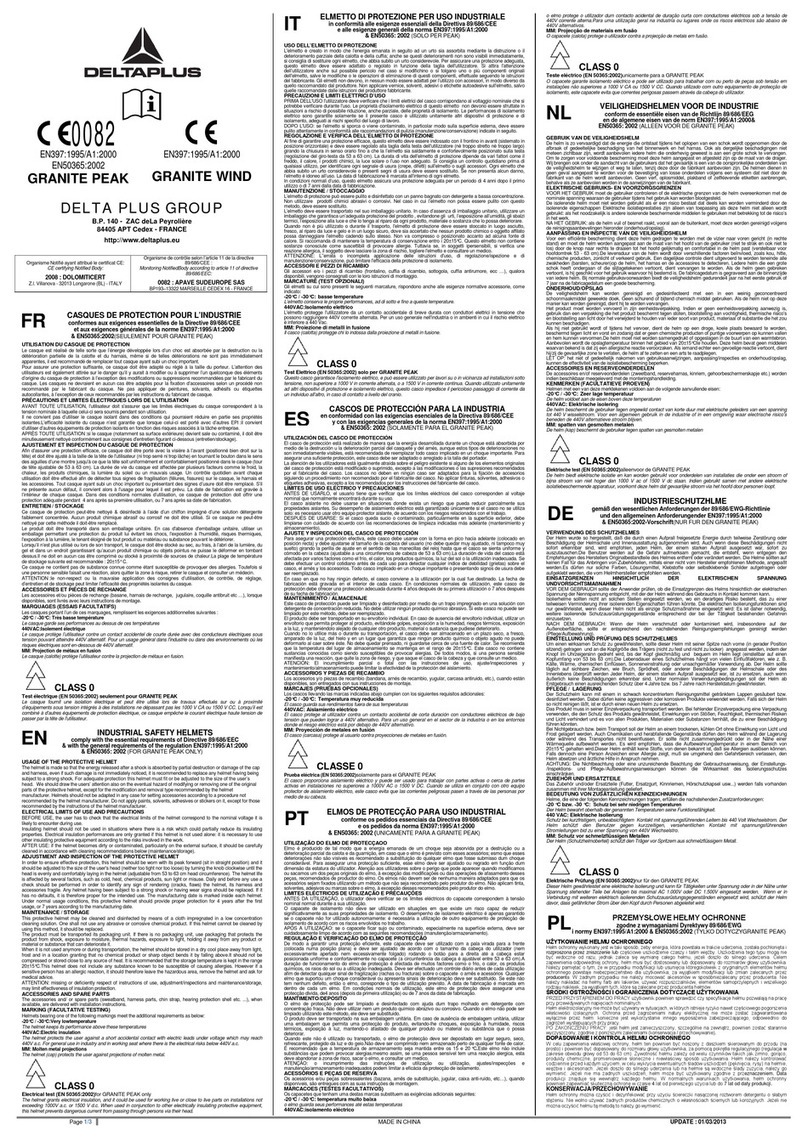
DELTA PLUS
DELTA PLUS GRANITE WIND manual
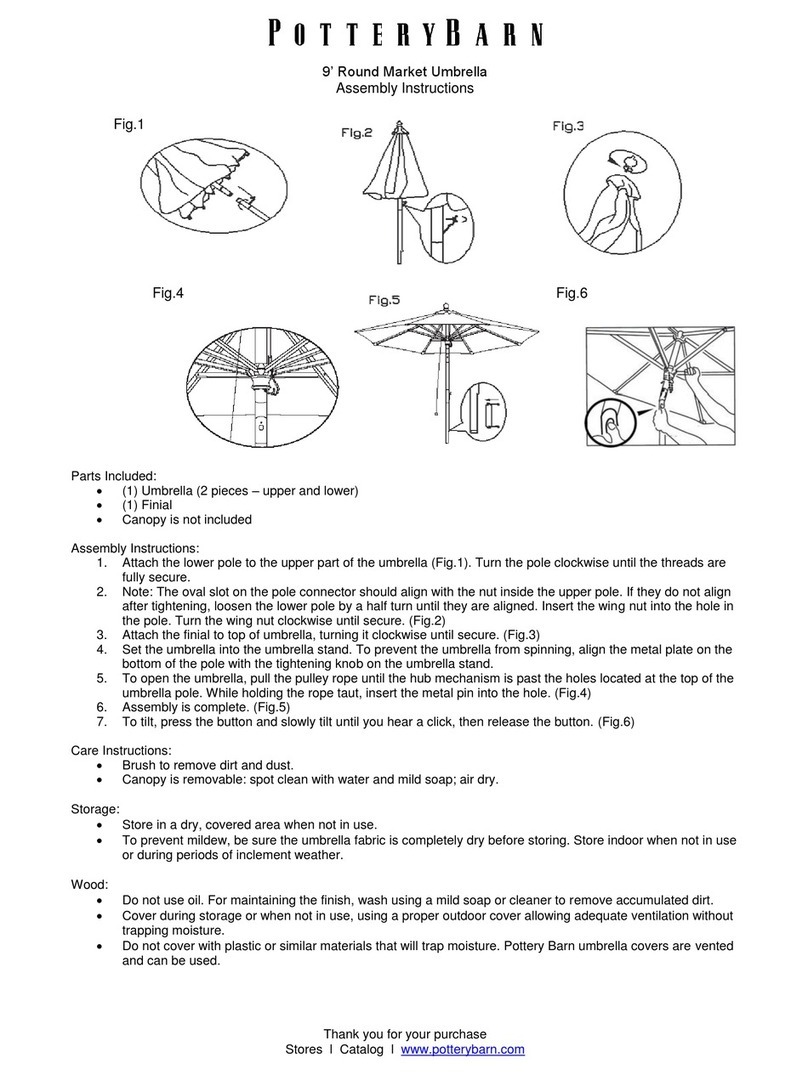
PotteryBarn
PotteryBarn Umbrella Assembly instructions

G-Force
G-Force CRW 300 Series instruction manual
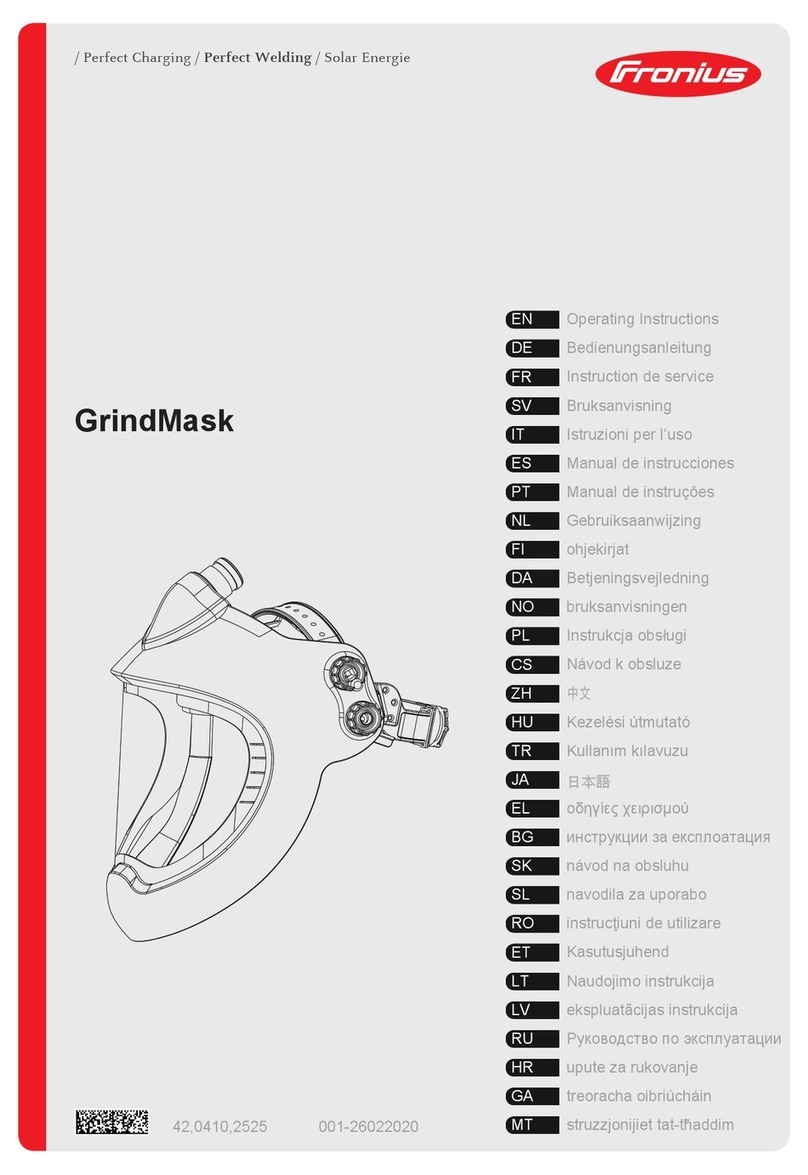
FRONIUS
FRONIUS GrindMask operating instructions

FLORABEST
FLORABEST FFSH 3 A1 Translation of the original instructions
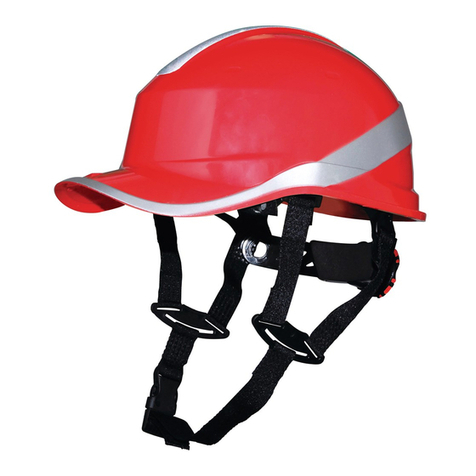
DELTA PLUS
DELTA PLUS DIAMOND V quick start guide
